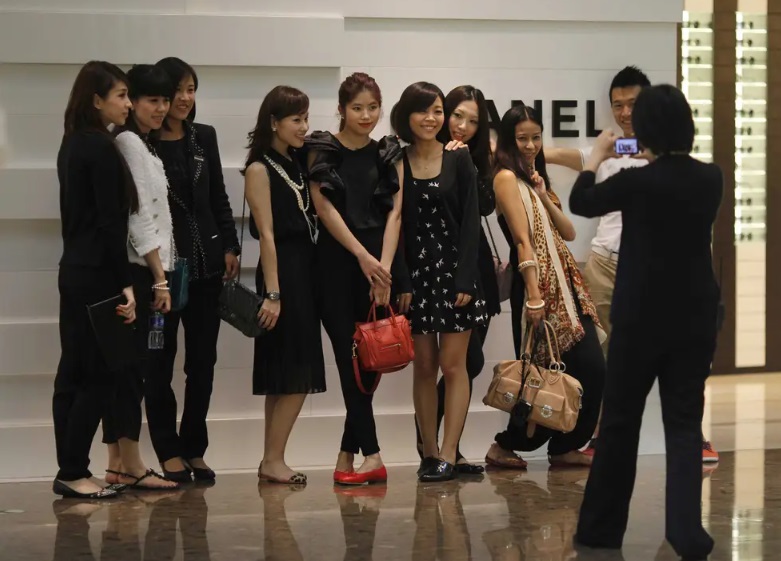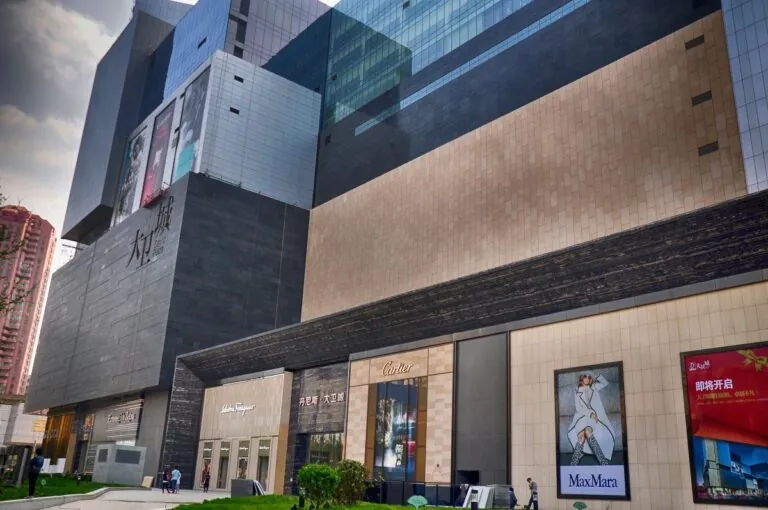How to develop your retail in China, find stores, retaillers, resellers … 50 tips and direct action.
In the dynamic landscape of China’s luxury market, retail plays a pivotal role in shaping the success and perception of luxury brands. As one of the largest and fastest-growing luxury markets in the world, China’s unique consumer base, characterized by its increasing affluence and appetite for high-end products, demands a tailored and sophisticated retail experience. The importance of retail in this context goes beyond mere transactions; it’s about creating a brand story and experience that resonates with the Chinese consumer’s evolving preferences and cultural aspect.
How to find more retail channels in China?
- Prospection of retailers that have a track record of successfully selling luxury products and understand the nuances of the luxury market.
- Leverage Industry Networking and Trade Shows: Attend luxury brand expos, trade shows, and industry networking events in China. These events are crucial for making connections with potential retailers, gaining insights into the latest market trends, and understanding the competitive landscape.
- Utilize E-commerce Platforms: Explore partnerships with major Chinese e-commerce platforms like Tmall Luxury Pavilion, JD.com, and WeChat. These platforms often have dedicated sections for luxury brands and can provide a significant boost in visibility and sales.
- Collaborate with Local Distributors or Agents: Consider working with local distributors or agents who have existing relationships with luxury retailers. They can provide valuable market insights, facilitate introductions, and help navigate the complexities of the Chinese retail market.
- Engage with Luxury Shopping Malls and Department Stores: Identify and engage with high-end shopping malls and department stores that are popular among affluent consumers. Securing a presence in these locations can enhance brand visibility and credibility among luxury shoppers in China.
- We can help you to develop your distribution . Contact us.
Retail in China are not just points of sale but are seen as extensions of the luxury brand itself, embodying its essence and values. The integration of digital technology, personalized services, and exclusive in-store experiences further enhances the importance of retail in building brand loyalty and maintaining a competitive edge in China’s luxury landscape.
Zhengzhou flourishing luxury market
Chanel, a symbol of French luxury, has recently inaugurated its first store in Zhengzhou, the capital of Henan province, signaling its foray into the heart of Central China’s flourishing luxury market. This expansion offers key insights for luxury brands aiming to penetrate the Chinese market.

Nestled in David Plaza, Henan’s exclusive luxury mall, Chanel’s boutique finds itself amongst elite neighbors like Louis Vuitton and Cartier. The store, a brainchild of renowned architect Peter Marino, reflects Chanel’s heritage of innovation in fashion with its simplistic yet striking design. This aligns with Chanel’s historical role in redefining haute couture with stylish, functional women’s clothing in the 1920s.
The boutique is well-equipped to cater to the elite, featuring specialized areas for its diverse product range and private consultation rooms for Very Important Clients (VICs). As Bain & Co. reports, the surge in Chinese VICs is reshaping the luxury market, prompting brands to enhance personalized services, both offline and online.
Read more
Nanchang 25 luxury houses
The potential of China’s Tier-2 city, Nanchang, is capturing the attention of global luxury brands, with around 25 premium labels planning to establish their presence in the region, heralding a new chapter in its luxury market.
Nanchang, the capital of Jiangxi Province in south-eastern China, boasts a population of 6.26 million as of 2020. In 2021, it achieved the highest GDP in Jiangxi Province, reaching 49.76 billion RMB ($7.23 billion), placing it 15th among the world’s top 20 fastest-growing cities.
Despite its economic growth, Nanchang has historically been overlooked by luxury brands, hosting only a few high-end commercial centers. This has led local consumers to travel to nearby cities like Wuhan for luxury shopping.
Recognizing an untapped opportunity, up to 25 high-end brands spanning fashion, jewelry, watches, and beauty cosmetics have chosen to open stores in Wushang Mall, set to launch in the first quarter of 2023.
The lineup includes prestigious names like Louis Vuitton, Burberry, Cartier, Tiffany & Co., Rolex, Bulgari, Lancôme, Estée Lauder, Qeelin, Jaeger-LeCoultre, and Balmain, marking Balmain’s first foray into Central China.
The decision of these luxury brands to enter Nanchang has been influenced not only by the city’s growing market potential but also by the established reputation of the Wushang Group.
Hainan’s duty-free market.
During the Labour Day holiday ending May 5, duty-free sales in Hainan skyrocketed by 248% year-on-year, hitting RMB 993 million ($153 million), as reported by Haikou Customs. This surge aligns with the objectives of the Hainan Free Trade Port master plan, introduced in June 2020, a key component of Chinese President Xi Jinping’s strategy to stimulate domestic consumption. The plan includes attractive incentives such as reduced import tariffs and a world-leading duty-free allowance of RMB 100,000 ($15,470) per consumer.
DFS, a travel retail operator owned by LVMH Moët Hennessy Louis Vuitton, announced on Sunday plans to launch the first-ever “seven-star” luxury retail and entertainment complex in Hainan, China, by 2026. Titled DFS Yalong Bay, this ambitious project is set to be the largest in DFS’s history, sprawling across 1.38 million square feet.

The four-day national event, driven by China’s Ministry of Commerce and the Hainan provincial government, underscored Beijing’s commitment to transforming Hainan into a major global offshore duty-free hub. Post the Covid-19 outbreak, President Xi introduced a “dual circulation” economic policy, partly aimed at refocusing Chinese consumer spending domestically, especially in light of international travel restrictions.
Highlighting Hainan’s burgeoning success, China Duty Free Group, the nation’s leading duty-free retailer, surpassed global giants like Dufry, DFS Group, and Lotte Duty Free in 2020, emerging as the world’s top travel retailer by sales.
However, while Hainan has emerged as a significant travel retail location, evolving it into a luxury shopping destination comparable to renowned international tourism spots in Europe, Japan, and South Korea remains a challenge.
In Top Cities, Shanghai, Beijing, Shenzhen

- price real estate and resulting lockdowns, particularly stringent in cities like Shanghai and Beijing, have significantly disrupted the operations of luxury brands. These restrictions have led to store closures, reduced foot traffic, and a decline in tourism, all of which are critical drivers of sales for luxury brands. The pandemic has also impacted consumer confidence and spending power, leading to decreased sales and revenue.
- Shift to E-commerce and Digital Platforms: There has been a rapid shift in consumer behavior towards online shopping, accelerated by the pandemic. While this presents opportunities, luxury brands traditionally reliant on the in-store experience have faced challenges in adapting to this digital shift. The delay in embracing e-commerce and effectively integrating digital strategies into their business models has resulted in lost sales opportunities, especially as consumers turn to platforms that offer more convenience and variety.
- Changing Consumer Preferences and Increased Competition: The luxury market in cities like Shanghai and Beijing is witnessing changing consumer preferences, with a growing demand for unique, personalized, and experiential luxury products. Additionally, the rise of domestic luxury brands and increased competition from international brands expanding in China have intensified the market competition. Luxury brands that have not adapted to these evolving preferences or failed to differentiate themselves are losing their appeal, leading to decreased sales
Business Tips for Luxury Brands Venturing into China:
- Understand Regional Nuances: Recognize the diverse cultural and economic landscapes across China. A strategy that works in East China might need adaptation for Central or Western regions.
- Invest in High-End Retail Spaces: Like Chanel, consider investing in luxury malls to establish brand presence and credibility.
- Personalize Customer Experience: Develop exclusive services and private shopping experiences to cater to the growing segment of VICs.
- Leverage Local Digital Platforms: Utilize platforms like WeChat and Weibo for marketing and customer engagement. Digital presence is key in China’s tech-savvy market.
- Collaborate with Local Influencers: Partner with Chinese KOLs and celebrities to increase brand visibility and appeal to a wider audience.
- Innovative Store Design: Invest in unique and culturally resonant store designs to create memorable customer experiences.
- Adapt Product Lines: Tailor products to meet local tastes and preferences. Limited edition items exclusive to the Chinese market can generate excitement.
- Sustainable Practices: Implement and highlight sustainable and ethical practices, as they are increasingly important to Chinese consumers.
- Online-Offline Integration: Seamlessly integrate online channels with physical stores for a holistic brand experience.
- Market Research and Consumer Insights: Regularly conduct market research to stay ahead of trends and understand consumer preferences in the dynamic Chinese market.
10 trends about luxury market i China
- Luxury Market Growth: The personal luxury goods market saw significant growth in 2022, with retail sales reaching approximately €353 billion, a 22% increase from 2021.
- Future Projections: Sales growth in 2023 is expected to range from 3% to 8%, depending on economic recovery in China and resilience in the US and Europe.
- Retail and Wholesale Dynamics: Retail has grown faster than wholesale, achieving market share parity, with a shift towards “omnichannel 3.0” strategies.
- Long-Term Outlook: By 2030, the personal luxury goods market could expand by 50% or more, potentially reaching between €540 billion to €580 billion.
- Asian Market Trends: Excluding mainland China and Japan, Asia’s luxury market surged by 43% in 2022, led by countries like Thailand, South Korea, and Southeast Asia.
- Mainland China’s Decline: In 2022, mainland China’s luxury market dipped by 1%, impacted by Covid lockdowns and reduced consumer confidence.
- Emerging Markets Potential: India and Southeast Asian countries show significant growth potential for the luxury industry, with India’s market possibly expanding 3.5 times by 2030.
- Distribution Control: Brands are increasingly controlling their distribution, with a rise in directly operated channels and monobrand stores.
- Online Sales Growth: Online luxury sales rose 20% from 2021 to 2022, with monobrand websites increasing their share of the online segment.
- Secondhand Market Expansion: The secondhand luxury goods market reached €43 billion in 2022, growing at 28%, with a notable increase in Asia, particularly China.
Tips for Luxury Brands Developing Retail Stores in China and Smaller Cities:
- Localized : Understand specific regional preferences and consumer behavior in smaller cities to tailor the brand experience.
- Create Exclusive Experiences: Offer unique, personalized in-store experiences to attract affluent consumers seeking exclusivity.
- Invest in Omnichannel Strategies: Develop a seamless integration of online and offline channels to enhance customer engagement and convenience.
- Cultivate Local Partnerships: Collaborate with local entities for better market penetration and consumer insight.
- Adapt to Local Trends: Be responsive to the evolving tastes and preferences of consumers in smaller cities, often different from those in metropolises.
- Focus on Community : Build brand loyalty by engaging with local communities and participating in regional events.
- Utilize Digital Marketing: Leverage social media and digital platforms popular in China to increase brand visibility and connect with potential customers.
- Offer Regional Exclusive Products: Create special editions or exclusive products for specific cities to generate local interest and buzz.
- Establish Strong Customer Service: Prioritize excellent customer service to build a loyal customer base in new markets.
- Monitor Competitive Landscape: Keep a close eye on local and international competitors to stay ahead in less saturated markets.
We have contacts of Distributors, retailers in many cities
We help brands to develop their distribution in China

